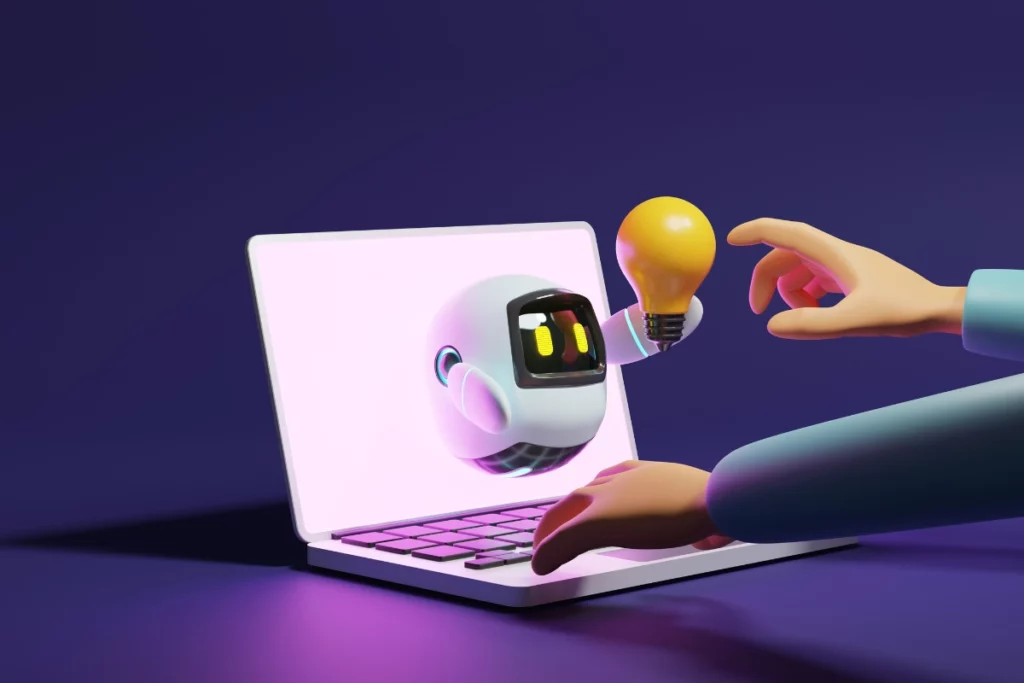Understanding how to optimize your blog post for SEO (search engine optimization) helps you drive organic website traffic and improve your online visibility. But SEO can be challenging, especially if you don’t know where to begin.

Let’s find out:
- Why SEO is critical for competing online (and how ignoring it wastes a precious opportunity to attract leads for free and boost sales)
- Actionable SEO techniques you can implement right now for a fighting chance on the first page of Google
- Advanced optimization methods to boost your ranking on search results (Google confirmed one of these methods is among the strongest ranking factors)
- The best way to handle SEO for blogging, if too busy with core business activities or unsure about getting started
The Power of SEO for Blogs
SEO is an efficient and profitable way to drive new leads and sales for your business. Instead of paying for clicks on result pages, your website ranks organically for intent-based queries. This helps attract potential customers for free, making blogging more profitable.
Additionally, blog post optimization increases online visibility in organic search, which helps connect with people looking for solutions you offer. Optimization also builds trust—the higher a website page ranks, the likelier it is to be trusted as a credible source.
Besides building trust and credibility, SEO for blog posts can boost sales. A Hubspot survey revealed that 56% of consumers buy from a business after reading their blog. Therefore, optimizing your posts to make them more visible to prospects provides an excellent opportunity to boost sales.
Appearing on the first page of Google is critical if you consider 75% of searchers never scroll past the first page. So, even if your content ranks on the second page of Google, it is most likely invisible to your target audience. Thus, it’s important to understand how to write blog posts for SEO and implement tips that increase visibility on result pages.
Getting Started with Blogging for SEO
Here are some actionable tactics to help you understand how to optimize your blog post for SEO.
Keyword Research
Many blogging beginners rely on a gut feeling to create content. They guess what would spark the interest of their audiences and use that to guide their content marketing.
With keyword research, you don’t have to depend on feelings or blind guesses when writing blog posts. Instead, you dig into what your prospects are looking for and brainstorm topics based on their interests. Using search engine data, you discover what terms potential customers use to search for products or solutions your business offers. Then, you use these terms to guide your content strategy. Multiple keyword research tools are available to simplify the process.
Tools for Keyword Research
- Ahrefs
- Semrush
- Moz
- Ubersuggest
- Google Keyword Planner
The best keyword research tool gives you the following details:
- Search volume: a monthly estimate of how many people search for the terms you are targeting.
- Keyword difficulty: An estimate of how hard it is to rank for a specific term.
- Keyword suggestions: They give you access to keyword ideas.
- Monthly traffic: The amount of traffic to expect if you rank for a specific target keyword.
Selecting High-Value Keywords
Choose a keyword with a high search volume. After all, there’s no point in targeting a term people are not looking for. High-value keywords have traffic potential. Keyword research tools have a traffic metric that estimates the monthly traffic to expect if you rank for a specific term.
Additionally, make sure you select keywords you can rank for. Keyword tools have a keyword difficulty score to help you assess how hard it is to rank for a term before you target it in your content strategy.
On-Page SEO
After thorough keyword research, use the selected terms to optimize the content on a web page. This technique is part of a strategy called on-page SEO. Here’s how to implement it:
Optimize Title Tags and Meta Descriptions
A title tag tells search engines the title of a web page. Further, a meta description summarizes the web page’s content and usually appears on the search engine result page just below the title tag.
Your title tag and meta description should convince searchers that the page is exactly what they seek. Include the target keyword in your title tag and meta description for this.
Place Target Keywords Strategically
It’s a best practice to include target keywords in header tags (H1), the first paragraph of a blog post, and subheaders (H2, H3, H4, etc.). Doing so helps search engines understand the context of your content. You also make it easy for users to tell whether a blog post matches their search intent quickly.
Use and Optimize Images
Use images that are relevant to the topic and include descriptive captions to provide good context to search engines. Additionally, place images near relevant text in your blog post whenever possible.
Advanced Techniques for SEO Blogging
Let’s dive into how to optimize your blog post for SEO using more advanced techniques.
Writing Quality Content
High-quality content is relevant to your audience. It resonates with your customer’s pain points, needs, or desires. Therefore, the content has the best chance to rank on Google. After all, the search engine giant prioritizes helpful content.
To create high-quality content, address your customers’ needs. Ensure your content aligns with search intent when writing blog posts for SEO. For instance, if someone searches for “how to use software X,” it’s clear that they want to learn, not buy. Your content, in this case, should be informational, not promotional.
Questions you need to ask when creating content are:
- What are the common questions your prospects typically ask?
- What are their concerns and frustrations?
- What are their motivations?
Content Length and SEO
Some people think that longer posts are always better. But does the content length really matter in SEO? In reality, there’s no ideal blog post length. Ranking better in search engines boils down to content quality and how comprehensively a post should cover a topic to meet the search intent.
That is, the length of your blog post should best serve your audience’s needs and address the topic sufficiently. Instead of aiming to reach a certain word count, focus on writing a well-researched, fluff-free, and engaging blog post that is as long as required.
Google’s senior search analyst, John Mueller, agrees.

Tweet by John Mueller, Google’s senior search analyst
Link Building
Link building involves linking internally to your web pages. It also includes other websites linking to your blog posts. Thus, link building makes discovering more content on your website easy. It also helps demonstrate expertise, authoritativeness, and trustworthiness. There are two types of link-building:
Internal Linking
As the name suggests, internal linking involves hyperlinks that lead to different blog posts within the same website. It is an effective tactic in SEO content writing (This hyperlink is an example of internal linking).
Internal linking is critical in SEO because:
- It helps search engines understand your website’s structure and how your web pages are related.
- It makes it easy for search engine bots to navigate and discover new pages.
- Potential customers can easily navigate your website (and engage more with your content).
Backlinking
Backlinking is an off-page SEO technique where other websites link to your blog. Suppose site X has a link to site Y. In that case, site Y has a backlink from site X. Andrew Lipattsev, Search Quality Senior Strategist at Google in 2016, confirmed that backlinks are among the strongest ranking factors.
However, not all backlinks have the same SEO value. Some are more effective than others. While nobody can tell what makes a perfect backlink, Google suggests you build them from prominent websites (sites with more authority than yours). Doing so will help demonstrate credibility, expertise, and authoritativeness.
Mobile Friendliness and Page Speed
A mobile-friendly website makes it easy for searchers to read a text without zooming or horizontal scrolling. Mobile friendliness means the site can adapt to a web user’s screen size.
In 2015, Google rolled out a mobile-friendly update. This update meant web pages optimized for mobile were prioritized on mobile search results. If your web pages aren’t mobile-friendly, your mobile traffic from Google searches decreases significantly.
To check whether an individual web page is mobile-friendly, use Google’s Mobile-Friendly Test tool. Use the Mobile Usability tool to assess the mobile-friendliness of your entire site.
Further, page speed is how fast your web page’s content loads. Page speed has been confirmed as a ranking factor on both desktop and mobile. The faster the loading time, the higher the chances of ranking better. Slow sites don’t rank better because they hurt user experience. Examples of tools to assess page speed include:
- Google Lighthouse
- Google PageSpeed Insights
- WebPage Test
Optimize Your Blog for SEO Today
Building a strong SEO presence is critical for competing online. However, SEO can be challenging for a small business, especially if you don’t know how to optimize your blog post for SEO or want to focus on core business opportunities. Partnering with a result-driven SEO agency gives you a fighting chance in the cut-throat ranking competition.





